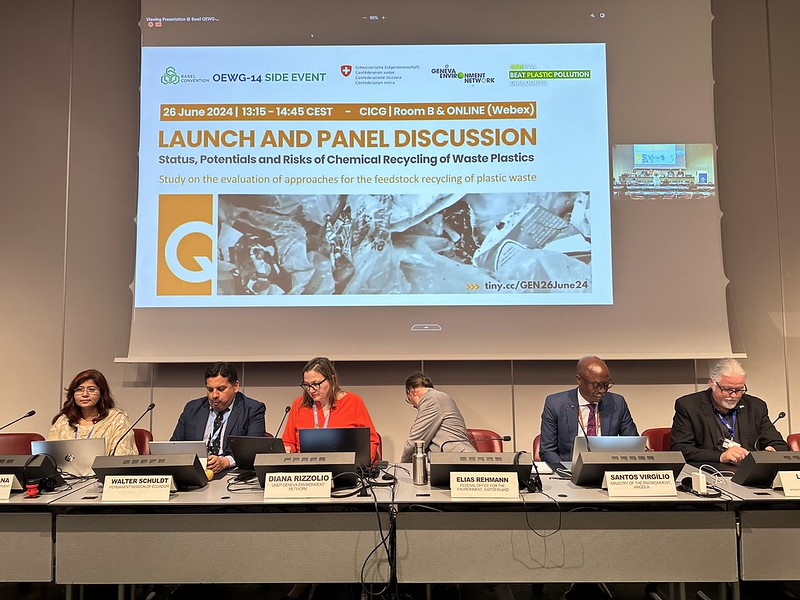Chemical recycling involves transforming plastic waste into chemicals or raw materials for the chemical industry through advanced methods. Unlike traditional recycling, it can process hard-to-recycle plastics, breaking them down into basic components to create high-quality materials for new products. The primary methods of chemical recycling include solvolysis, liquefaction, pyrolysis, and gasification. Despite its potential, chemical recycling faces significant challenges. The process is still under study, and converting plastic to fuel often results in oil needing significant improvement and higher pollutant emissions. Additionally, plastics contain harmful chemicals like BPA, lead, and phthalates, posing risks during disposal or recycling. Methods like pyrolysis and gasification can release harmful substances, including toxic gases and compounds, and the pyrolysis of mixed plastics can produce oils and gases with harmful elements, increasing overall toxicity.
Chemical recycling is expensive due to the costs of material preparation and product cleaning, and contamination and health risks from cleaning agents are significant concerns. Limited availability of suitable materials and inadequate infrastructure can lead to environmental harm and the export of plastic waste for suboptimal recycling. The technical and economic feasibility of chemical recycling remains uncertain. Mixed environmental assessments and high costs suggest that heavy investment without proven benefits may lead to ineffective technology and infrastructure. Furthermore, several proposed solutions are criticized for addressing symptoms rather than root causes. Global plastic recycling rates remain low, and household recycling rates often fall below 50% even in advanced countries. Recycled plastic quality is inferior, perpetuating linear consumption.
Clean-up initiatives, such as beach clean-ups and river sweeps, address symptoms but not the root causes of pollution. Without reducing production and consumption, clean-ups are insufficient, although they help identify pollution sources and hold companies accountable. Bioplastics, derived from renewable biomass or biodegradable, often require specific conditions to break down and can persist as nano- and micro-plastics. Production may still rely on fossil fuels, posing risks to food security and land use. The discovery of plastic-eating bacteria raised hopes, but deploying these microbes poses risks and uncertainties. Relying on biological agents addresses symptoms rather than the root problem. Chemical recycling is energy-intensive and has multiple intrinsic and ancillary energy demands, rendering it unsuitable as a sustainable technology. No current chemical recycling technology offers a net positive energy balance, and there is no evidence to suggest improvement in the foreseeable future. Siddika Sultana, Executive Director of ESDO, provided these insights at the “Launch and Panel Discussion: Status, Potentials, and Risks of Chemical Recycling of Waste Plastics of Basel OEWG-14”, emphasizing the critical risks and challenges associated with chemical recycling and the need for comprehensive strategies and systemic changes to address plastic waste and its environmental impact effectively.


